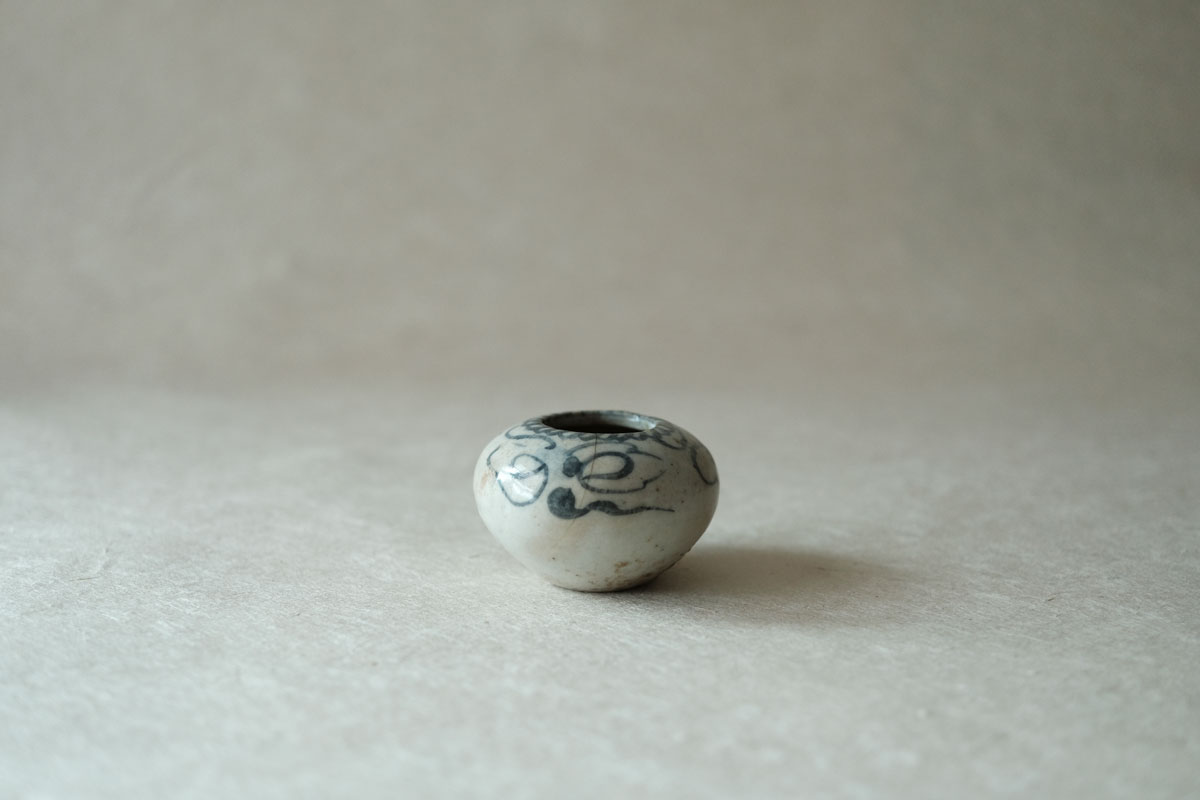TRACES
My earliest memory with my halmoni—grandmother in Korean—involves small jade animal figurines and the slight chill they emanated on my fingertips. Halmoni had multiple rabbit figurines, as she was born in the year of the rabbit, but really all sorts of animals—enough for me to play and create stories with.
Born in 1939, she grew up in a city that bears no resemblance to the one we walk together now. As tumultuous as her life has been, the city itself went through then-unimaginable changes, and very little remains to hold the memory of the past and her lived experiences. Perhaps for this reason, halmoni’s home is always filled with objects and their rich history—abandoned paintings, ceramics, and figurines found their place in halmoni’s presence, as people moved into newly-built apartments from their family homes.
Holding a ceramic bowl in her palms, she vividly recalls a story about an artist she encountered and befriended many decades back. This was her way of remembering, keeping a record of her past and the history of others. Though my formal introduction to art history would come many years later in college, my education in art began with halmoni’s stories of ceramic bowls, calligraphic paintings, and cabinets embellished with mother-of-pearl as her firm but warm hand brushed through my hair. She taught me that to hold an object in hand and to gaze upon it is to bear witness to the stories it carries.
My first experience as an art historian began with these stories embedded within these objects at my halmoni’s. My relationship with halmoni fostered an understanding of art history as a practice of holding memories and creating ways to bring disparate positions in conversation with one another—whether those are different identities or temporalities. The objects I found at halmoni’s put me in conversation with her lived experiences and the object’s history; it taught me that the present is in constant negotiation with the past and future and that interconnectedness is at the core of our being. My education—whether in school or at halmoni’s—taught me the importance of asking good questions and cultivated curiosity as a daily practice.
Born in 1939, she grew up in a city that bears no resemblance to the one we walk together now. As tumultuous as her life has been, the city itself went through then-unimaginable changes, and very little remains to hold the memory of the past and her lived experiences. Perhaps for this reason, halmoni’s home is always filled with objects and their rich history—abandoned paintings, ceramics, and figurines found their place in halmoni’s presence, as people moved into newly-built apartments from their family homes.
Holding a ceramic bowl in her palms, she vividly recalls a story about an artist she encountered and befriended many decades back. This was her way of remembering, keeping a record of her past and the history of others. Though my formal introduction to art history would come many years later in college, my education in art began with halmoni’s stories of ceramic bowls, calligraphic paintings, and cabinets embellished with mother-of-pearl as her firm but warm hand brushed through my hair. She taught me that to hold an object in hand and to gaze upon it is to bear witness to the stories it carries.
My first experience as an art historian began with these stories embedded within these objects at my halmoni’s. My relationship with halmoni fostered an understanding of art history as a practice of holding memories and creating ways to bring disparate positions in conversation with one another—whether those are different identities or temporalities. The objects I found at halmoni’s put me in conversation with her lived experiences and the object’s history; it taught me that the present is in constant negotiation with the past and future and that interconnectedness is at the core of our being. My education—whether in school or at halmoni’s—taught me the importance of asking good questions and cultivated curiosity as a daily practice.
Two years ago, we went to the National Museum of Contemporary Art in Duksugung. As we sat under the ginkgo tree on a warm fall afternoon, she picked out vibrant yellow ginko leaves and shared stories of the life she had dreamed of. I kept two ginkgo leaves from that day—carefully placed in my notebook, they remind me to keep my heart soft, open, and curious.
published: February 2025
